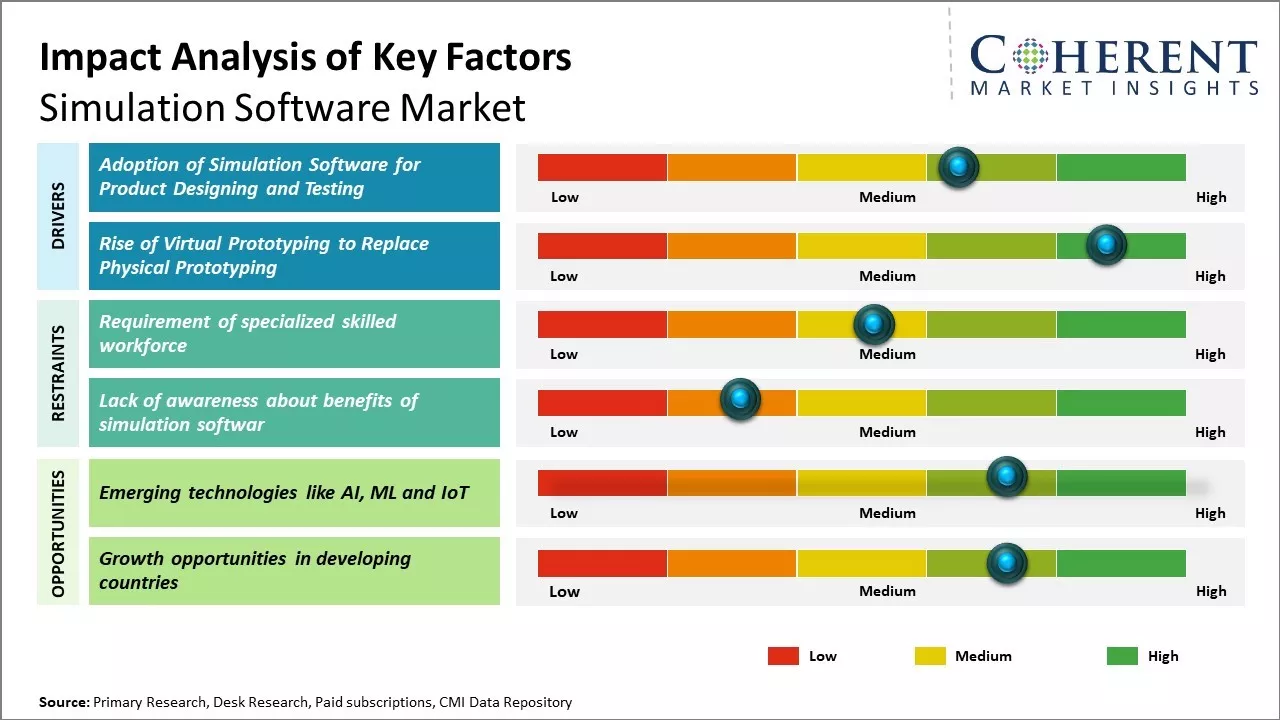The Simulation Software Market is estimated to be valued at USD 16.13 billion in 2025 and is expected to reach USD 36.82 billion by 2032, growing at a compound annual growth rate (CAGR) of 12.5% from 2025 to 2032.

To learn more about this report, Request sample copy
The simulation software market is expected to grow significantly over the forecast period. Technologies such as augmented reality, virtual reality, and artificial intelligence are expected to drive the demand for more advanced simulation software. Adoption of simulation software is increasing across industries as it helps in optimizing business processes and reducing costs. Increased investments in digitization and developing complex software and systems also contribute to the growth of the simulation software market. The rising need to train personnel efficiently and virtually before using real equipment will further propel the demand for simulation software.
Adoption of Simulation Software for Product Designing and Testing
The use of simulation software tools has increased tremendously in the product designing and testing processes across various industries in the recent years. With the help of simulation, companies can test their product designs digitally before spending huge amounts on manufacturing prototypes. This allows them to identify potential design flaws or performance issues virtually and make necessary changes without incurring large physical production costs. Simulation helps optimize products for specific industry needs while lowering quality issues and bringing products to market faster.
Many organizations in automotive, aerospace, healthcare and other engineering sectors have started utilizing simulation at early design stages to study how their products will perform under real-world operating conditions and environmental factors. For example, automakers can simulate car crashes at various speeds and angles to test occupant safety without destroying physical vehicles. Medical device manufacturers can simulate how human anatomies will interact with surgical tools and implants using physiology software to ensure usability and safety compliance. Consumer product designers too have benefitted from virtually testing the durability, stress resistance and user experience of their products before manufacturing. Overall, simulation allows for lowering the risks of design failures and recall costs by comprehensively testing products digitally.
Joining thousands of companies around the world committed to making the Excellent Business Solutions.
View All Our Clients